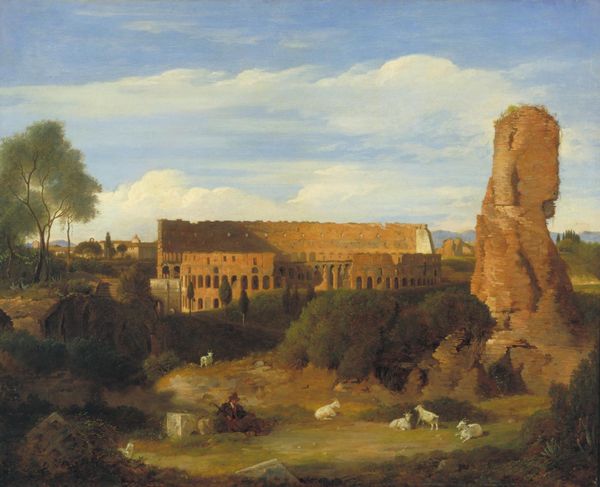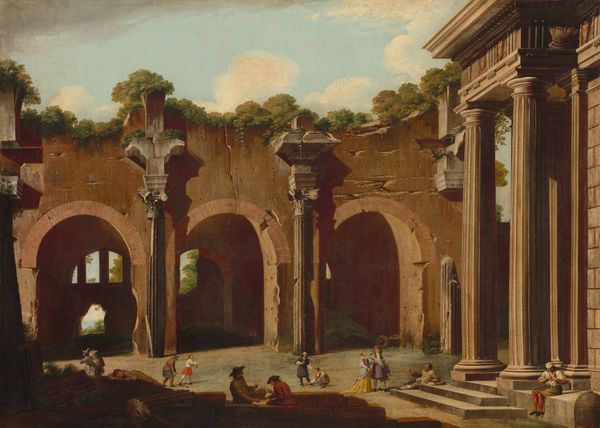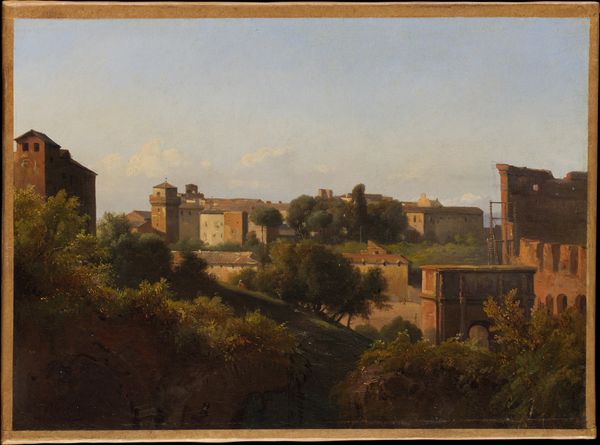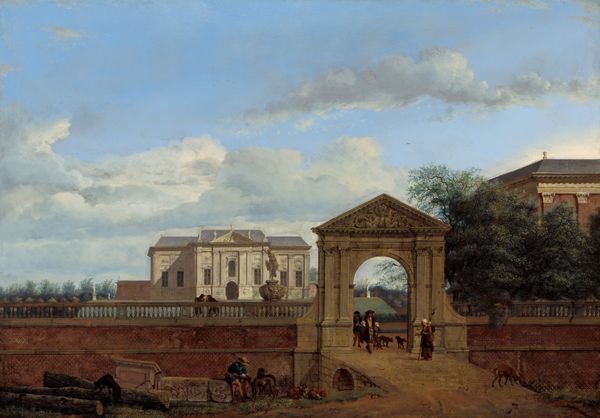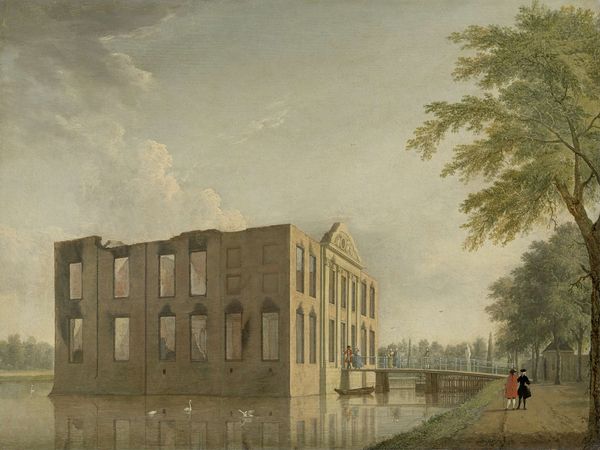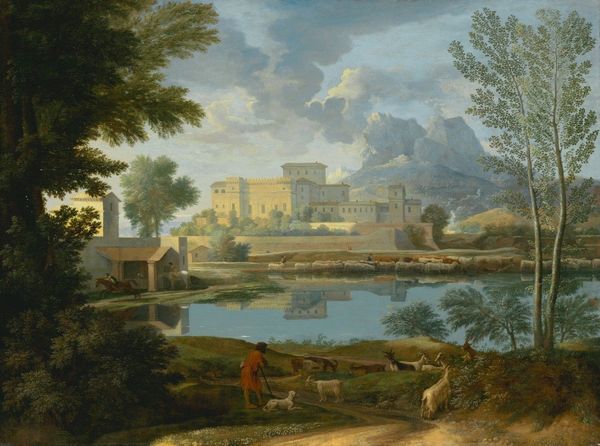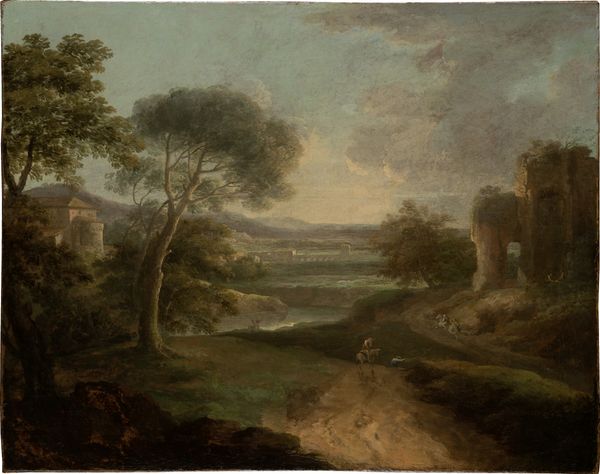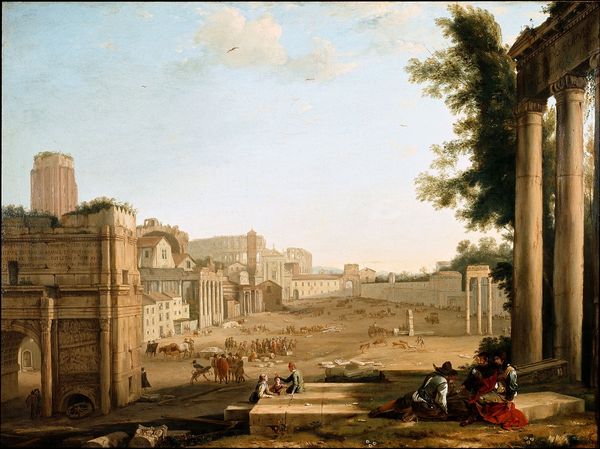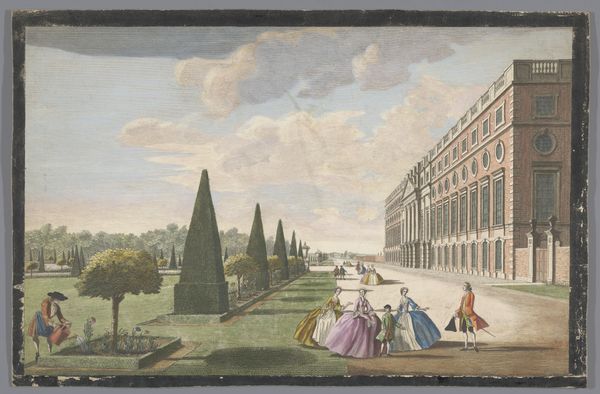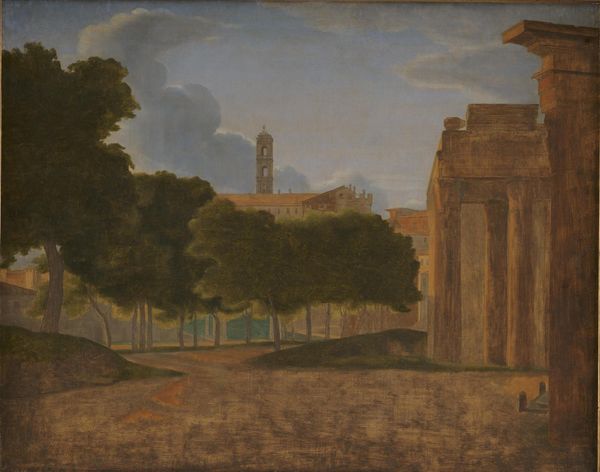
Dimensions: support: 527 x 654 mm frame: 712 x 844 x 90 mm
Copyright: CC-BY-NC-ND 4.0 DEED, Photo: Tate
Curator: Sir Charles Lock Eastlake painted this view, The Colosseum from the Esquiline; he died in 1865. Editor: The Colosseum seems softened, almost as if nature is reclaiming it. Curator: Yes, the Colosseum is a very loaded symbol, isn't it? The weight of empire, gladiatorial spectacle, and even early Christian martyrdom. Eastlake's composition, though, almost domesticates the ruin. Editor: The trees and foliage certainly do. What about the lone figure in the foreground? Is she meant to represent the quiet perseverance of daily life against the backdrop of such a monumental, and violent, past? Curator: Possibly. The woman could symbolize the enduring spirit of the Roman people, or maybe just the simple fact that life goes on, even amidst ruins. Editor: Eastlake really invites us to consider how history shapes identity, and how we choose to remember—or not remember—the darker aspects of our past. Curator: It's amazing how the Colosseum continues to speak to us across centuries. Editor: Indeed, Eastlake's vision grants a serene, yet poignant perspective.
Comments
tate 6 months ago
⋮
http://www.tate.org.uk/art/artworks/eastlake-the-colosseum-from-the-esquiline-t00664
Join the conversation
Join millions of artists and users on Artera today and experience the ultimate creative platform.
tate 6 months ago
⋮
Eastlake began his career as a painter but went on to become Director of the National Gallery in 1851. The sale of an early picture funded Eastlake’s travels to Rome in 1816. There he joined a circle of artists including the Italian sculptors Antonio Canova and Bertel Thorwaldsen, the German Nazarenes and students of the French Academy of Fine Arts. Eastlake often sketched outdoors, straight from nature. His habit of painting even in bright sunshine won him the nickname ‘the Salamander’. From these studies he painted small pictures of Roman scenery like this view of the Colosseum. Gallery label, May 2019
